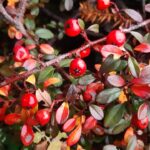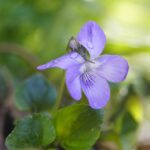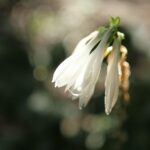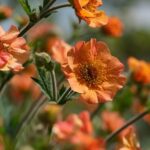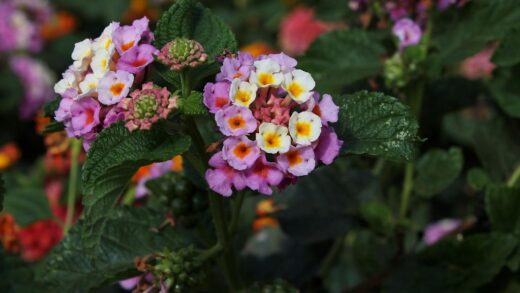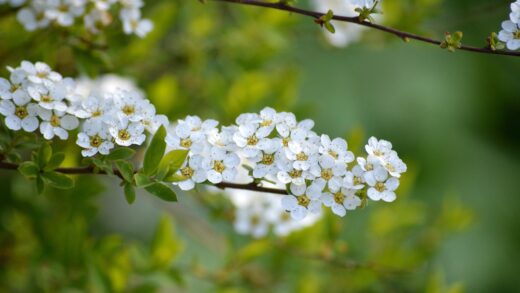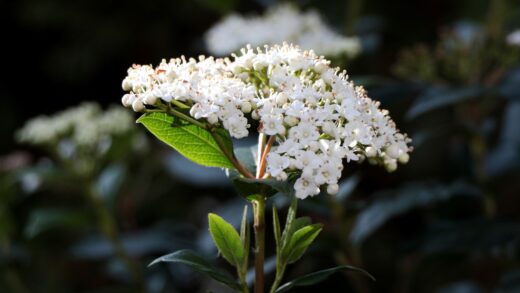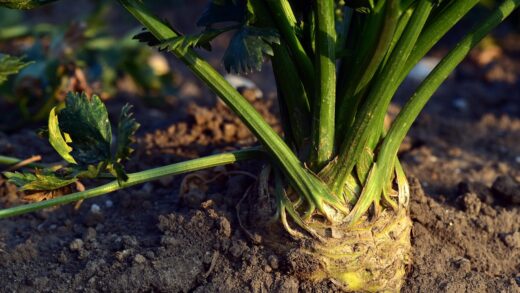The successful cultivation of the Asiatic dayflower begins with proper planting techniques and an understanding of its reproductive strategies, which are key to establishing a healthy and thriving population in the garden. This species can be introduced to a new area either through direct sowing of seeds or by transplanting young seedlings, with each method having its own set of considerations for optimal results. The timing of planting is crucial; it should be done in the spring after the last threat of frost has passed, allowing the plant to take full advantage of the entire growing season. When planting, selecting a site that meets its requirements for light and soil is a fundamental prerequisite for its future growth and development. The process involves preparing the soil to create a welcoming environment for the seeds or seedlings, ensuring they have the best possible start.
Before planting, the chosen site must be meticulously prepared to foster strong establishment. This involves clearing the area of all existing weeds and debris that could compete with the young Asiatic dayflower plants for essential resources like water, nutrients, and light. The soil should then be tilled or loosened to a depth of at least fifteen to twenty centimeters to improve aeration and allow the roots to penetrate easily. This is also the ideal time to incorporate organic matter, such as well-rotted compost or aged manure, which enriches the soil, enhances its moisture-holding capacity, and provides a gentle, slow-release source of nutrition for the newly planted specimens.
When it comes to spacing, the plant’s vigorous, spreading growth habit must be taken into account. If planting individual seedlings or plants, they should be spaced approximately thirty to forty-five centimeters apart. This initial spacing may seem generous, but it allows ample room for each plant to expand and form a dense mat of foliage without becoming overly crowded, which can lead to poor air circulation and an increased risk of fungal diseases. If sowing seeds directly, they can be scattered more thinly over the prepared area and lightly raked into the soil surface, with the resulting seedlings thinned later to the appropriate spacing.
After planting, providing immediate and consistent care is vital for the successful establishment of the Asiatic dayflower. The soil should be watered thoroughly to settle it around the roots of transplants or to initiate the germination of seeds. For the first few weeks, it is especially important to keep the soil consistently moist to prevent the young plants from experiencing transplant shock or dehydration. Applying a thin layer of organic mulch around the base of the plants can help to conserve soil moisture, regulate soil temperature, and suppress the emergence of new weeds, further supporting the healthy development of the new planting.
Propagation from seed
Propagating the Asiatic dayflower from seed is a straightforward and highly effective method for establishing a large number of plants. The seeds can be collected in late summer or autumn from mature, drying seed pods of existing plants or purchased from a commercial supplier. For best results, the seeds often benefit from a period of cold stratification, which mimics the natural winter conditions they would experience outdoors. This can be achieved by storing the seeds in a sealed bag with some moist sand or vermiculite in a refrigerator for four to six weeks before the intended sowing date.
More articles on this topic
Seeds can be sown directly into the garden in the spring once the soil has warmed and the danger of frost has passed. The prepared seedbed should be smooth and fine-textured to ensure good seed-to-soil contact. Scatter the seeds lightly over the surface and cover them with a very thin layer of soil, no more than a few millimeters deep, as they require some light for germination. Gently water the area with a fine spray to avoid dislodging the seeds, and keep the soil surface consistently moist until the seedlings emerge, which typically takes one to three weeks depending on the conditions.
Alternatively, for an earlier start, the seeds can be sown indoors six to eight weeks before the last expected frost date. Use shallow trays or small pots filled with a sterile seed-starting mix. Sow the seeds on the surface of the mix and lightly press them in, then cover the container with a clear plastic dome or wrap to maintain high humidity. Place the container in a warm location with plenty of bright, indirect light. Once the seedlings have emerged and developed their first true leaves, the cover can be removed, and they should be thinned to prevent overcrowding.
When the indoor-grown seedlings are large enough to handle and have developed a strong root system, they must be gradually acclimated to outdoor conditions before being planted in the garden. This process, known as hardening off, involves exposing the young plants to increasing periods of outdoor sunlight and temperature over the course of a week to ten days. This prevents transplant shock and ensures they are prepared for the rigors of the garden environment. After they have been fully hardened off, the seedlings can be carefully transplanted into their permanent location, following the recommended spacing guidelines.
Propagation by cuttings
Vegetative propagation through stem cuttings is an exceptionally reliable and rapid method for multiplying the Asiatic dayflower. This technique produces plants that are genetically identical to the parent, ensuring that desirable traits like flower color and growth habit are preserved. The best time to take cuttings is during the active growing season, from late spring to mid-summer, when the stems are vigorous and healthy. The process is simple and takes advantage of the plant’s natural ability to form roots from its stem nodes, which is the same mechanism it uses to spread along the ground.
More articles on this topic
To take a cutting, select a healthy, non-flowering stem from the parent plant. Using a clean, sharp knife or pruning shears, cut a section of stem that is approximately ten to fifteen centimeters long. The cut should be made just below a leaf node, which is the point on the stem where a leaf emerges. It is beneficial to include several nodes on each cutting, as these are the points from which new roots and shoots will develop. Remove the leaves from the lower half of the cutting to prevent them from rotting when placed in the propagation medium.
The prepared cuttings can be rooted in either water or a solid medium like potting soil. To root them in water, simply place the lower half of the cuttings in a glass or jar of water, ensuring that the remaining leaves are above the waterline. Place the container in a bright location out of direct sunlight and change the water every few days to keep it fresh. Roots should begin to appear from the submerged nodes within one to two weeks. Once a healthy root system has formed, the cuttings can be carefully potted into soil.
For rooting directly in soil, fill a small pot or tray with a moist, well-draining potting mix. A mixture of perlite and peat moss works very well for this purpose. Dip the cut end of each stem cutting into a rooting hormone powder to encourage faster and more robust root development, although this step is often not strictly necessary for this easy-to-root species. Insert the lower third of the cuttings into the potting mix, firming it gently around them. Cover the pot with a plastic bag to create a humid environment, and place it in a warm spot with indirect light, keeping the soil consistently moist until new growth indicates that the cuttings have successfully rooted.
Division of clumps
Although the Asiatic dayflower is typically grown as an annual, in milder climates where it may persist, or with plants grown in large containers, division is another viable method of propagation. Division involves separating an established clump into smaller sections, each with its own set of roots and shoots. This not only creates new plants but also helps to rejuvenate an older, overcrowded clump, promoting better health and vigor. The ideal time to divide the plant is in the early spring, just as new growth is beginning to emerge.
The process begins by carefully digging up the entire plant clump from the ground or removing it from its container. Use a garden fork or spade to gently lift the root ball, taking care to minimize damage to the root system. Once the plant is out of the soil, gently shake or rinse off the excess soil so that the structure of the roots and crowns is clearly visible. This will make it easier to identify the natural division points and to separate the clump into viable sections.
Using a sharp, clean knife, a spade, or even your hands for smaller clumps, divide the plant into several smaller pieces. Each new section should have a healthy portion of the root system and at least a few healthy stems or growth buds. Discard any parts of the clump that appear dead, diseased, or weak. The goal is to create well-balanced divisions that have a good chance of establishing themselves quickly when replanted.
Immediately after dividing, the new sections should be replanted in their desired locations or in pots filled with fresh potting mix. Plant them at the same depth they were originally growing and water them thoroughly to settle the soil and eliminate any air pockets around the roots. Keeping the soil consistently moist for the first few weeks after division is crucial for their recovery and the establishment of new roots. This method provides a straightforward way to manage the size of a single plant while simultaneously creating new ones to expand the garden.
Site preparation and planting
Proper site preparation is a critical step that lays the groundwork for the successful establishment and long-term health of the Asiatic dayflower. The first task is to select an appropriate location that aligns with the plant’s natural preferences. This means choosing a spot that receives partial shade or dappled sunlight, particularly in the afternoon, to protect the foliage from the harsh effects of intense sun. The site should also be well-draining yet capable of retaining adequate moisture, avoiding areas that are either perpetually waterlogged or prone to drying out completely.
Once the location is chosen, the soil must be prepared. This involves thoroughly clearing the area of any perennial weeds, rocks, or other debris. The soil should then be cultivated to a depth of about twenty to twenty-five centimeters, which can be done with a garden fork or a tiller. This process of loosening the soil improves its structure, allowing for better root penetration, water infiltration, and air exchange, all of which are vital for a healthy root system.
Enriching the soil with organic matter is the next crucial phase of preparation. Spreading a five- to ten-centimeter layer of compost, aged manure, or leaf mold over the cultivated soil and mixing it in will significantly improve its fertility and texture. This amendment provides a slow and steady supply of essential nutrients, enhances the soil’s ability to hold water like a sponge, and promotes a thriving population of beneficial soil microorganisms. A soil test can also be performed at this stage to check the pH and make any necessary adjustments to bring it within the preferred slightly acidic to neutral range.
With the site fully prepared, the final step is the planting itself. Whether using seedlings grown indoors or plants purchased from a nursery, dig a hole for each plant that is slightly wider and the same depth as its root ball. Carefully remove the plant from its container, gently tease out any circling roots, and place it in the hole. Backfill the hole with the prepared soil, firming it gently around the base of the plant. After planting, water the area deeply and thoroughly to ensure good contact between the roots and the soil, and consider adding a layer of mulch to help conserve moisture and suppress weeds.









